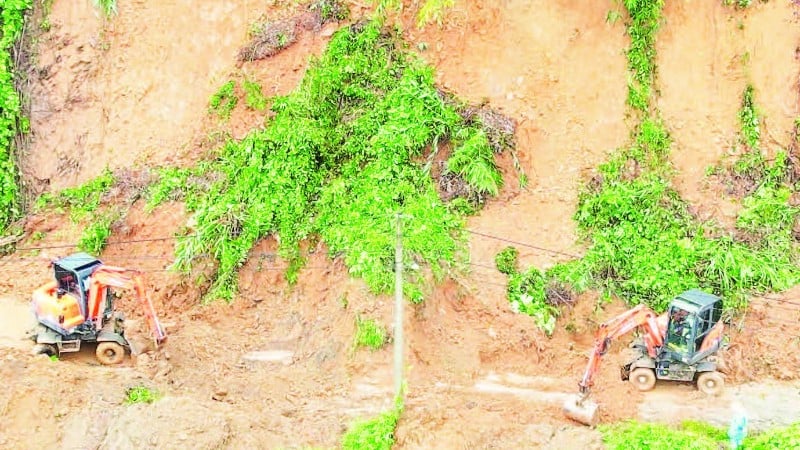
Since April, at Km31+150 on Provincial Road 258, from Phu Thong Commune to Cho Ra Commune, a large crack has appeared on the mountainside. After the rains, soil and rocks have slid down, causing local traffic jams. The assigned management unit has urgently mobilized machinery to clean and clear the road temporarily. However, due to the large crack, after a few days of cleaning, when it rains, soil and rocks slide back down to the road surface, posing many potential dangers to traffic participants.
In total, the management unit has excavated and cleared away approximately 11,000 m3 of soil and rock that has slid down. Through survey and assessment of this large landslide, to completely handle it, a very large volume of soil and rock must be excavated and steps must be created. However, due to the limited funding for this work, the handling of the above landslide point can only be carried out by excavating and clearing away the soil and rock that has slid down.
While this landslide has not been completely repaired, on September 30, also on Provincial Road 258, at Km14+600, the section passing through Thuong Minh commune, another landslide occurred, with rocks from the positive slope flowing down and covering the road surface with a volume of about 30,000 m3.
Due to the impact of storm No. 10, as of October 1, the traffic system in Thai Nguyen province continued to suffer from many landslides on both positive and negative slopes. In total, 23 landslides with a volume of about 80,000 m3 of soil and rock appeared on national highways. The provincial road system suffered 21,800 m3 of landslides; rural roads had 95 landslides with a volume of 10,234 m3.
In addition, 46 overflow bridges were flooded and 95m of rural roads were eroded. These are just a few of the thousands of landslides on national and provincial highways in the province. According to information from the Traffic Construction Maintenance and Consulting Management Board (Thai Nguyen Provincial Department of Construction), the landslides are mainly located on routes in the northern region, with strongly fragmented terrain; many routes are newly constructed, with unstable geology, most of which have a loose geological structure, making landslides likely to occur when there is prolonged rain.
Preliminary statistics show that in 37 northern communes of Thai Nguyen province, there are nearly 1,000 landslides on 18 roads with an estimated volume of hundreds of thousands of cubic meters of soil and rock. Lack of funding is the biggest obstacle to handling these landslides. However, when funding is available, management units face a difficult problem of dumping waste soil and rock.
Most of the roads in the northern communes of Thai Nguyen province still do not have a planned dumping site. This leads to the management unit and construction contractor having to find a dumping site by negotiating with the commune authorities with households who need to use soil and waste rock to improve the land. This is only a temporary solution, not sustainable, not enough to meet the large volume of landslides, and is prone to violations of land improvement to change the land use purpose. Meanwhile, if the dumping site is too far away, it will be costly due to additional costs.
The recent heavy rains have caused many landslides on Provincial Road 259 from Bac Kan ward to Thanh Mai commune. According to Bac Kan Road Management Joint Stock Company, handling the landslide volume that spilled onto the road is difficult because there is no dumping site within nearly 10 km from the landslide site. Transporting it over long distances will be very costly while requesting a new dumping site will take several months to complete the procedures.
In addition, the provincial road system in Thai Nguyen still faces many difficulties in regular maintenance due to very low periodic maintenance rates. Currently, 37 northern communes of the province are still applying a maintenance rate of 30 million VND/km/year for provincial roads; southern communes apply a maintenance rate of 50 million VND/km/year; this fund is mainly for small repairs such as patching potholes, dredging longitudinal ditches, etc.
According to Director of Bac Kan Traffic Construction and Management Joint Stock Company Tran Hieu Chung, the maintenance rate of 30 million VND/km/year only meets 30% of the demand, while most of the provincial roads in the northern communes are paved roads, and many items need to be maintained because the quality of paved roads is lower than that of asphalt concrete roads. Not to mention, most of the paved roads were constructed a long time ago and have reached the repair and overhaul period. With this rate, the unit only mainly carries out tree cutting, dredging longitudinal ditches, and clearing sewers, while patching "potholes" on the road surface is almost impossible. Management units must "tighten their belts", depending on the actual situation to determine which urgent items to spend on first.
After the merger, Thai Nguyen province is managing and operating about 1,500 km of roads, including seven national highways with a length of more than 538 km and 38 provincial roads with a length of more than 1,000 km. To respond to and overcome the risk of landslides on traffic routes, the Traffic Construction Maintenance and Consulting Management Board has coordinated with the management unit to regularly monitor and grasp the developments of rain and floods, promptly remedying landslide locations.
Director of the Thai Nguyen Province Traffic Construction Maintenance and Consulting Management Board Nguyen Dinh Vu said: “We are coordinating with specialized departments of the Department of Construction, advising the Department's leaders to report to the Provincial People's Committee for policies to overcome the consequences of natural disasters caused by storms and rains on the roads. The Board also recommends that the Provincial People's Committee consider and increase the allocation of local career funds and capital for repairing mountainous traffic to carry out the work of managing and repairing provincial roads regularly and periodically, especially in the northern region.”
Source: https://nhandan.vn/kho-khan-trong-bao-tri-cac-tuyen-giao-thong-tai-thai-nguyen-post912815.html



![[Photo] Students of Binh Minh Primary School enjoy the full moon festival, receiving the joys of childhood](https://vphoto.vietnam.vn/thumb/1200x675/vietnam/resource/IMAGE/2025/10/3/8cf8abef22fe4471be400a818912cb85)
![[Photo] Prime Minister Pham Minh Chinh chairs meeting to deploy overcoming consequences of storm No. 10](https://vphoto.vietnam.vn/thumb/1200x675/vietnam/resource/IMAGE/2025/10/3/544f420dcc844463898fcbef46247d16)




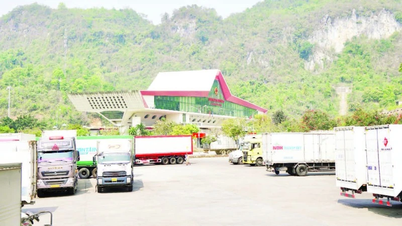
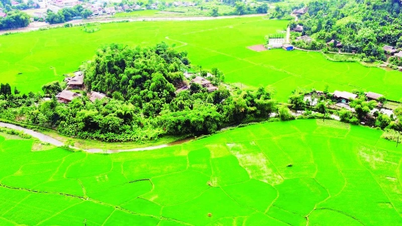
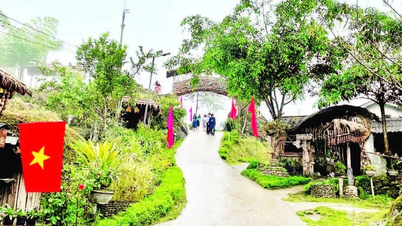
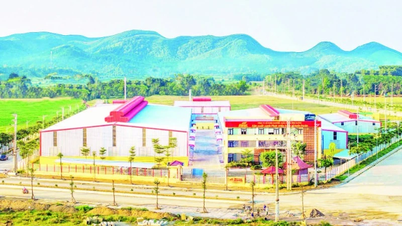

































































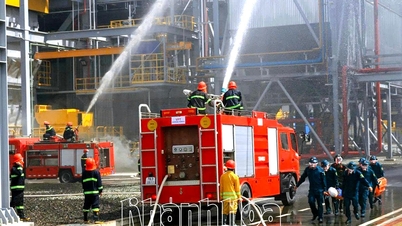

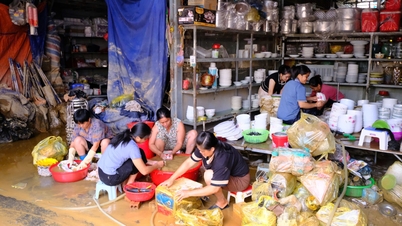



















Comment (0)